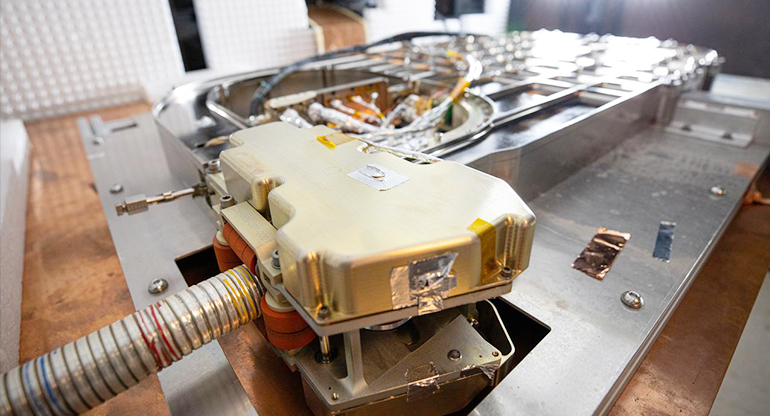We are helping NASA design and build an unmanned spacecraft to service satellites on orbit
Under the Omnibus Multidiscipline Engineering Services (OMES) II contract, SAIC is supporting NASA from tip to tail in its mission of using an unmanned spacecraft to refuel the Landsat 7 satellite. From our technicians torqueing bolts to systems engineers, managers, and everyone in between, SAIC has the incredible opportunity to help NASA develop and build the OSAM-1 (On-orbit Servicing, Assembly, and Manufacturing 1) spacecraft that will service and keep the satellite functioning well beyond its original lifespan, while proving the ability to perform complex robotic tasks in space.
“OMES II is a rare omnibus contract opportunity to provide integrated engineering services across a wide range of disciplines for OSAM-1,” said Cori Quirk, SAIC’s OSAM-1 project lead. “It allows SAIC to be entrenched with NASA in design and technology management, working closely with the civil servants to design, build, and manage this ground-breaking mission.”
Very few satellites were designed to be serviced, and for those that were, astronauts were required. As you can imagine, this is a complex task that skyrockets safety, cost, and risk concerns. In addition, the non-serviceable satellites often run out of fuel despite the science instruments still being functional, resulting in their decommission and becoming space junk.
In order to reduce the hazards of sending humans to space and also to increase the functional lifespan of existing satellites, NASA engineers began to pivot toward the idea of robotic satellite servicing and refueling — sending a robot to space.
Tackling an array of engineering challenges
SAIC technicians and engineers have the chance to work hand in hand with NASA, providing our wide-ranging expertise in all aspects of the hardware and software development for the various tools and technologies that are needed for OSAM-1’s success. These include the autonomous rendezvous and docking mechanisms, the servicing robotic arms, servicing tools, avionics, cameras and sensors, and much more.
Once OSAM-1 is built and ready in mid-2024, NASA plans to send it to Landsat 7, a satellite that has been operating for more than 20 years and is quickly running out of fuel. Landsat 7 will act as a guinea pig to prove out this first-of-its-kind robotic technology.
The engineering challenges inherent in OSAM-1 require a wide range of expertise. Simple functions that are easily done by human hands, like cutting a wire and removing a cap, are more challenging for robotics. The robotic element (two robot arms) is probably the most critical aspect of the OSAM-1 mission.
In order to perform refueling and servicing tasks on orbit, the design and manufacture of the electrical boxes, cabling, cameras, eight-plus tools that go on the end of the robotic arm, and many more elements are just as important as the arms. Many hours of writing algorithms and software are also needed just for OSAM-1 to locate, recognize, and grab Landsat 7.
In addition, the actual refueling and servicing process will require slow and precise movements, making the operational timeframe of the mission to be nearly a year. This is why software and hardware prototyping and extensive testing are necessary to achieve success.
By utilizing automated, robotic capabilities to successfully dock with and top up Landsat 7 with fuel, SAIC will help NASA prove out the concept of satellite refueling and the technologies to do it. This could lead other government agencies to standardize their designs of future satellites for servicing and refueling.
FURTHER READING: See how SAIC supports NASA in myriad ways. Learn more through the stories below.
Risk Mitigation Keeps Astronauts Out of Harm's Way
Enterprise Apps: Bringing Them to NASA Faster
Ocean Health Tracked Using Satellite Imagery
Photos courtesy of NASA.


